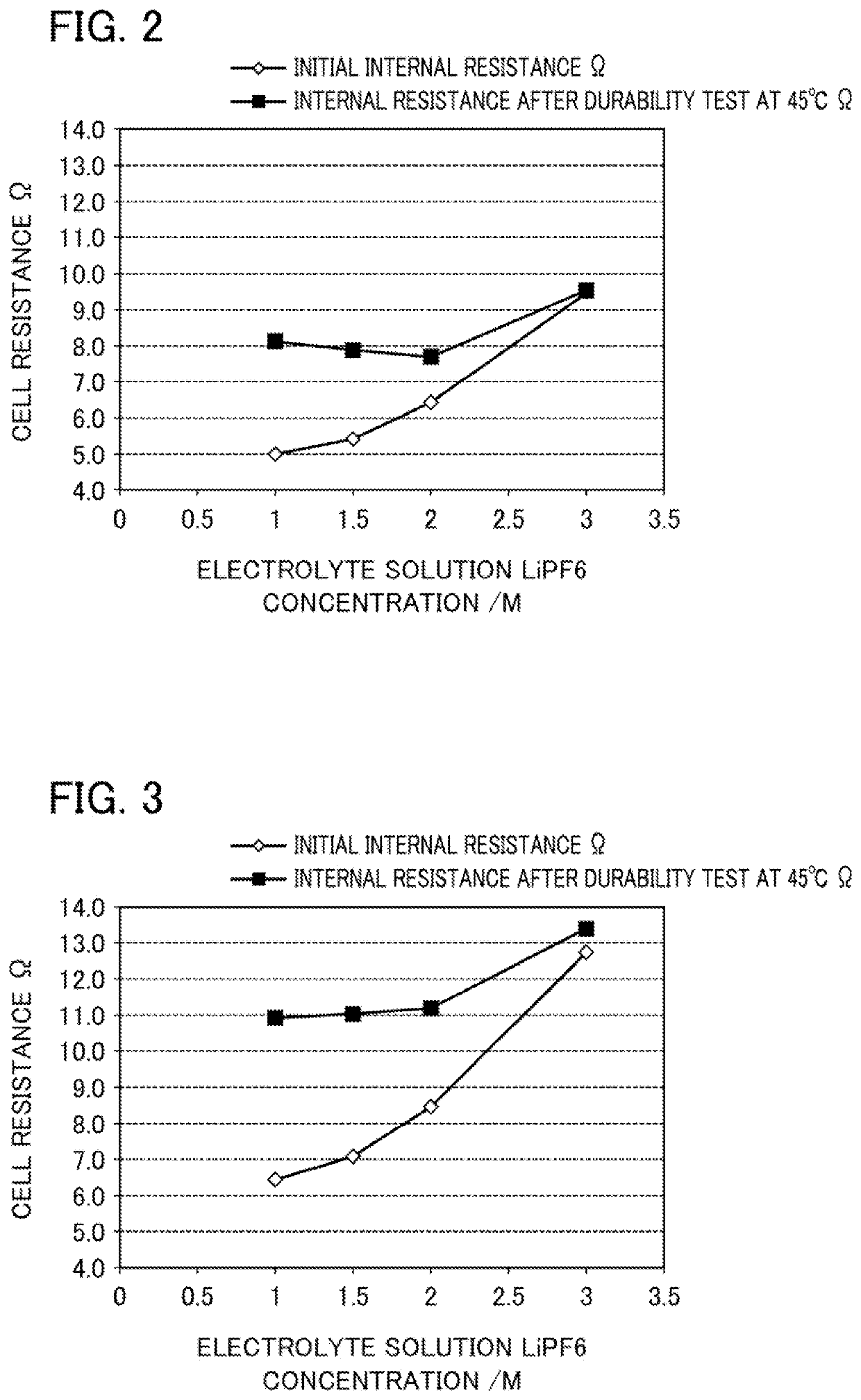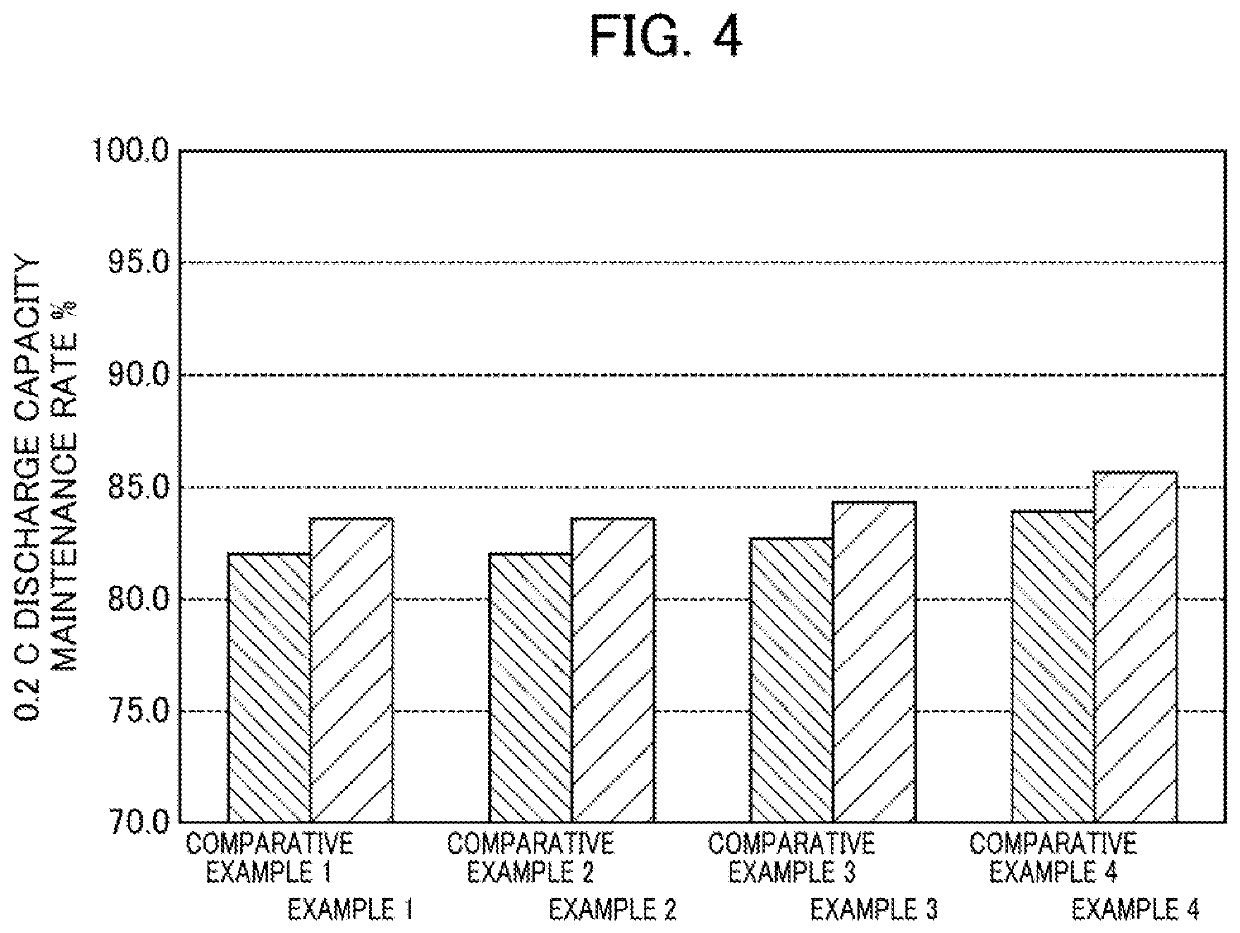Electrode for lithium-ion secondary battery, and lithium-ion secondary battery
a lithium-ion secondary battery and electrode technology, applied in the direction of positive electrodes, electrochemical generators, cell components, etc., can solve the problems of reducing the amount of electrolyte solution held by the electrode, affecting the efficiency of the electrode, so as to reduce the diffusion of lithium ions inside the electrode, the effect of suppressing the increase in resistance and high packing density
- Summary
- Abstract
- Description
- Claims
- Application Information
AI Technical Summary
Benefits of technology
Problems solved by technology
Method used
Image
Examples
example 1
[Preparation of Positive Electrode]
[0150]Acetylene black as a conductivity aid and Li1.3Al0.3Ti1.7(PO4)3 (LATP) as a solid oxide electrolyte were mixed, and dispersed using a planetary centrifugal mixer, to obtain a mixture.
[0151]Subsequently, to the obtained mixture were added polyvinylidene fluoride (PVDF) as a binder and LiNi0.6Co0.2Mn0.2O2 (NCM622, D50=12 μm) as a positive electrode active material, followed by dispersion treatment using a planetary mixer, to obtain a mixture for a positive electrode composite material.
[0152]The ratio of each component in the mixture for a positive electrode composite material was adjusted to achieve the positive electrode active material:LATP:conductivity aid:resin binder (PVDF) of 92.1:2:4.1:1.8 in mass ratio, in other words, adjusted such that the amount of LATP added was 2 parts by mass with respect to 100 parts by mass of the mixture for a positive electrode composite material. Subsequently, the obtained mixture for a positive electrode com...
examples 2 to 4
[0180]A lithium-ion secondary battery was prepared in the same manner as in Example 1, except that the lithium salt concentration of the electrolyte solution located the gap formed between the particles of the positive electrode active material in the positive electrode was changed as shown in Table 1.
example 5
[Preparation of Positive Electrode]
[0182]A positive electrode for a lithium-ion secondary battery was prepared in the same manner as in Example 1, except that LATP, a solid oxide electrolyte, was not added to the positive electrode.
[Preparation of Negative Electrode]
[0183]Artificial graphite (AG, D50=12 μm) as a negative electrode active material, Li7La3Zr2O12 (LLZO, D50=0.5 μm) as a ferroelectric member as a lithium-ion-conductive solid electrolyte, and acetylene black as a conductivity aid were mixed, and dispersed using a planetary centrifugal mixer, to obtain a mixture.
[0184]Subsequently, the obtained mixture was dispersed in distilled water, then carboxymethylcellulose (CMC) and styrene butadiene rubber (SBR) as a binder were added, and dispersion treatment was performed using a planetary mixer, to obtain a negative electrode composite material paste.
[0185]Incidentally, the ratio of each component in the negative electrode composite material was adjusted to achieve the negative...
PUM
 Login to View More
Login to View More Abstract
Description
Claims
Application Information
 Login to View More
Login to View More - R&D
- Intellectual Property
- Life Sciences
- Materials
- Tech Scout
- Unparalleled Data Quality
- Higher Quality Content
- 60% Fewer Hallucinations
Browse by: Latest US Patents, China's latest patents, Technical Efficacy Thesaurus, Application Domain, Technology Topic, Popular Technical Reports.
© 2025 PatSnap. All rights reserved.Legal|Privacy policy|Modern Slavery Act Transparency Statement|Sitemap|About US| Contact US: help@patsnap.com



